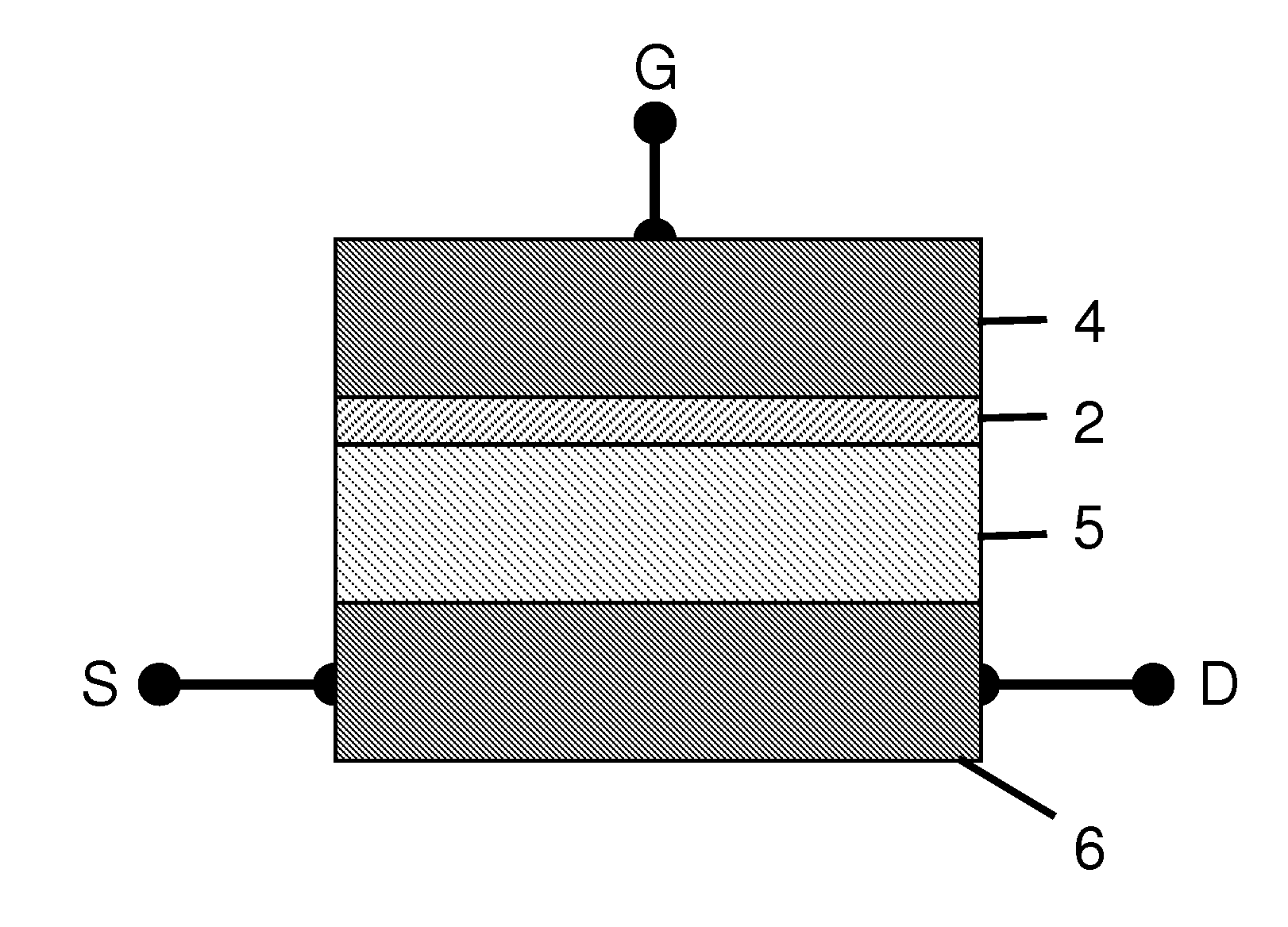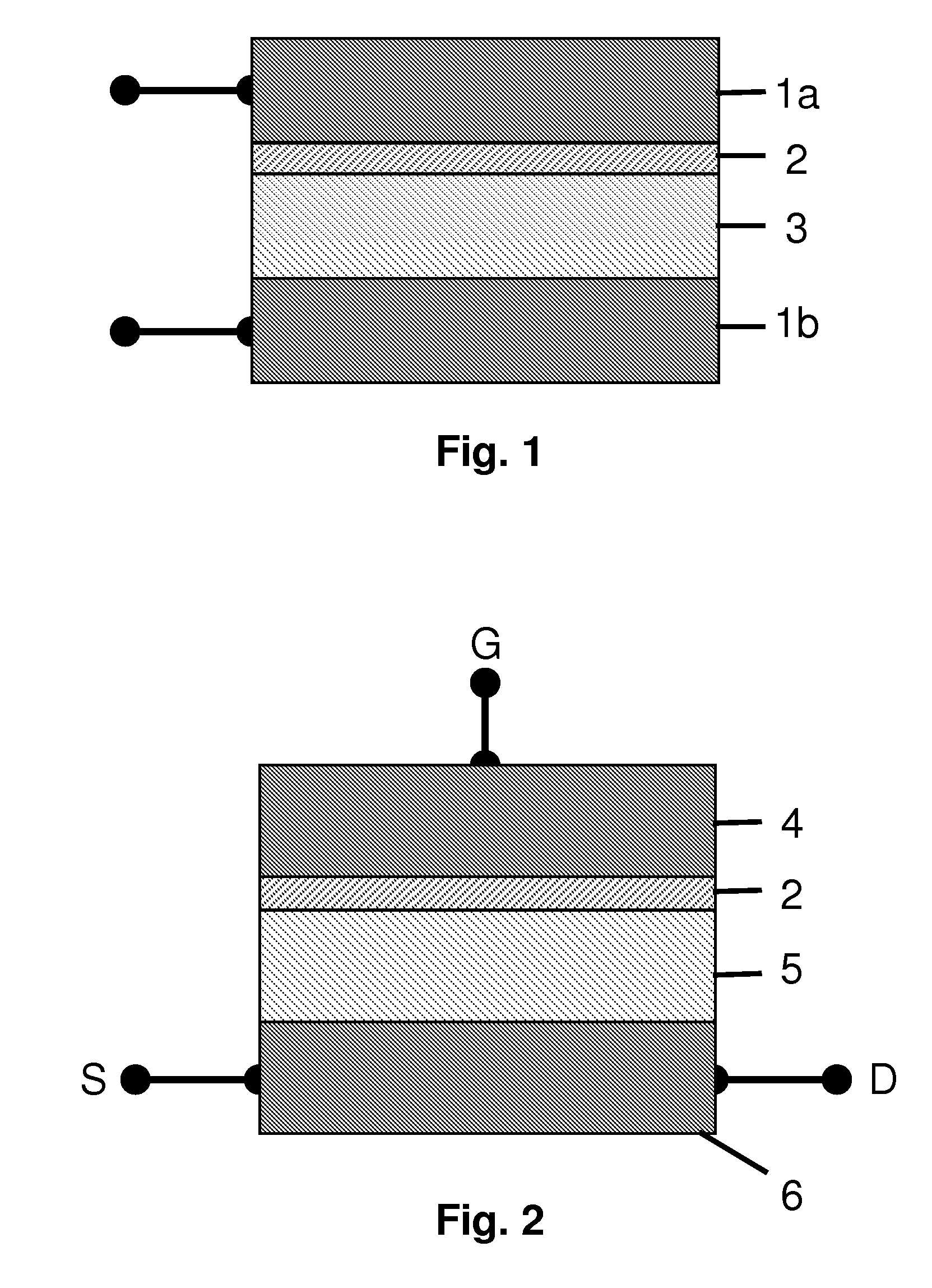Novel capacitors and capacitor-like devices
a technology of capacitors and capacitors, applied in the direction of fixed capacitors, fixed capacitor details, thin/thick film capacitors, etc., can solve the problems of high cost of changes, limited transmission speed of such transmission lines, and all electronic devices that use or are affected, so as to enhance or reduce the capacity of devices
- Summary
- Abstract
- Description
- Claims
- Application Information
AI Technical Summary
Benefits of technology
Problems solved by technology
Method used
Image
Examples
Embodiment Construction
[0041]FIG. 1 illustrates a capacitor according to the invention with electrodes 1a and 1b separated by a standard dielectric 3. The capacity of this capacitor is altered by an MAI layer 2.
[0042]A capacitor according to the invention is shown in FIG. 1. Therein, the electrostatic property—and thus the capacitance—is determined by the MAI 2 and the dielectric 3. In such a configuration, even a 2D-electron gas of a semiconducting heterostructure may be integrated into a practical capacitor.
[0043]Preferable dimensions are:[0044]a dielectric 3 having a thickness of less than (20 nm×εr), εr being the dielectric constant of the dielectric material used; and[0045]an MAI of less than 50 nm thickness.
[0046]Thus, if air is the dielectric, the resulting thickness of the dielectric should be less than 20 nm. If a dielectric material with a high dielectric constant, e.g. larger than 10, is used, the dielectric may have a preferable thickness of less than 200 nm. Altogether, the thickness of the d...
PUM
 Login to View More
Login to View More Abstract
Description
Claims
Application Information
 Login to View More
Login to View More - R&D
- Intellectual Property
- Life Sciences
- Materials
- Tech Scout
- Unparalleled Data Quality
- Higher Quality Content
- 60% Fewer Hallucinations
Browse by: Latest US Patents, China's latest patents, Technical Efficacy Thesaurus, Application Domain, Technology Topic, Popular Technical Reports.
© 2025 PatSnap. All rights reserved.Legal|Privacy policy|Modern Slavery Act Transparency Statement|Sitemap|About US| Contact US: help@patsnap.com



